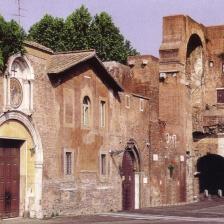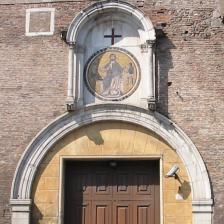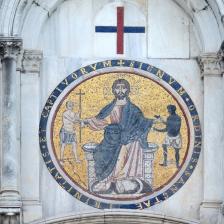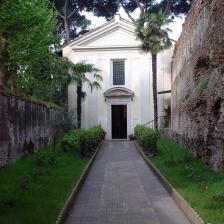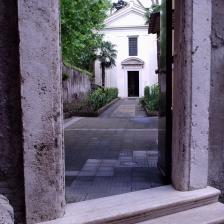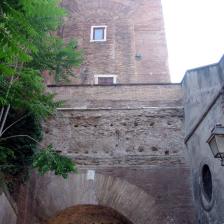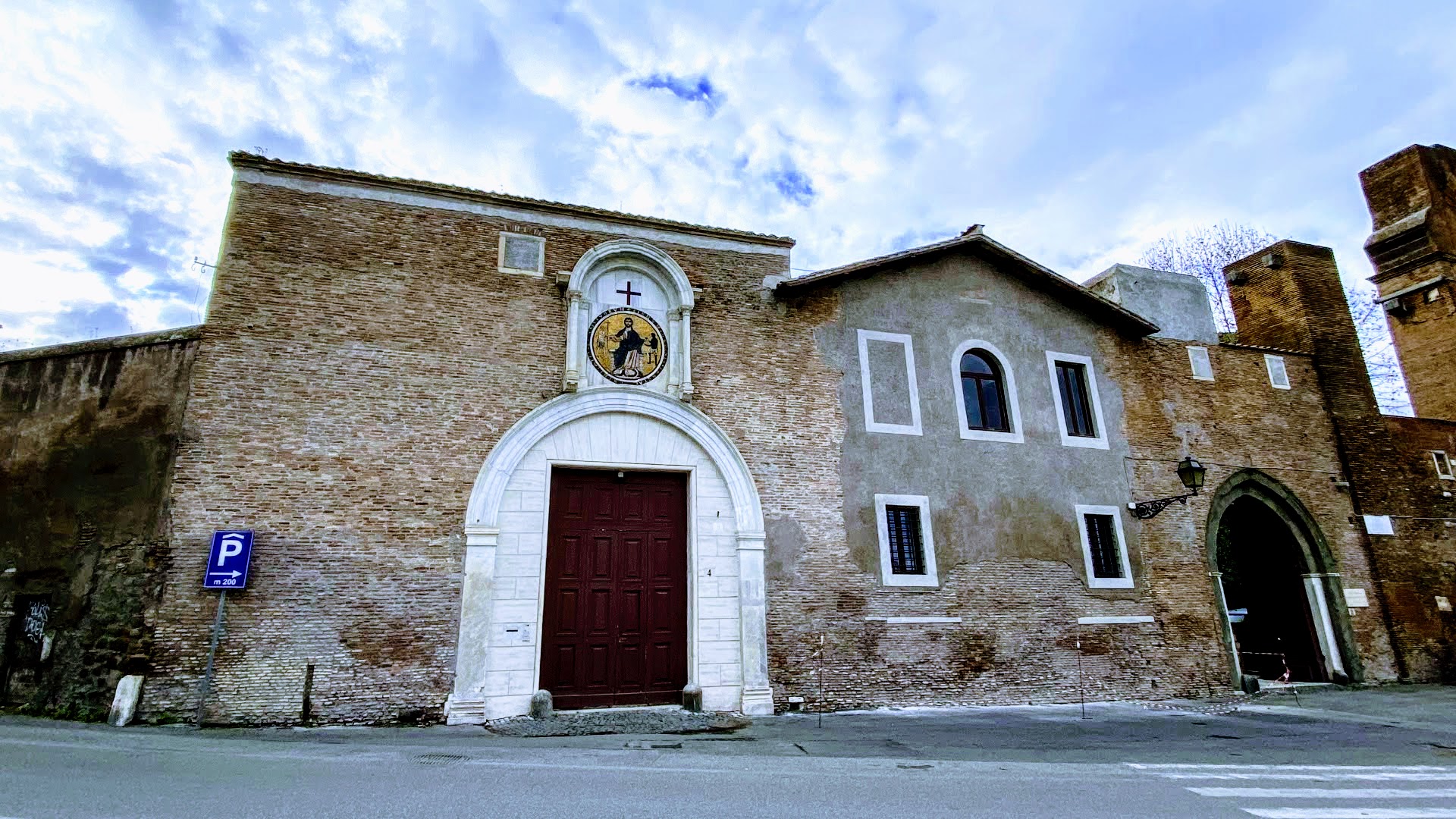
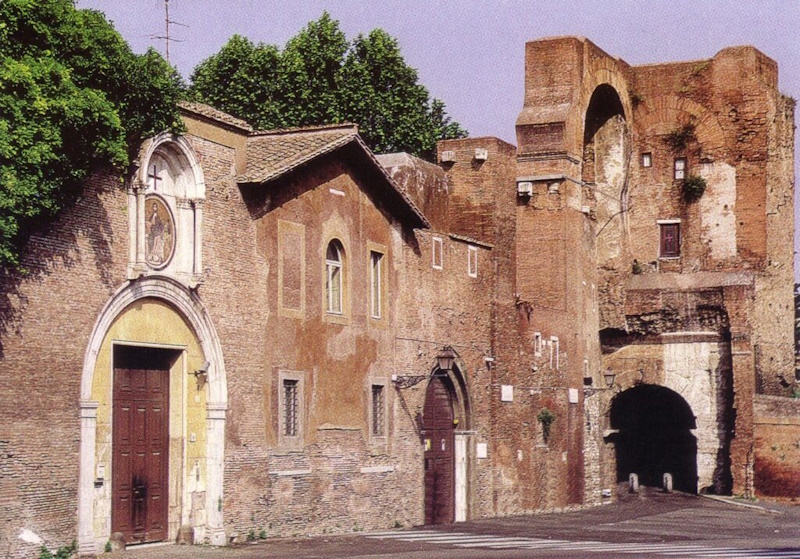
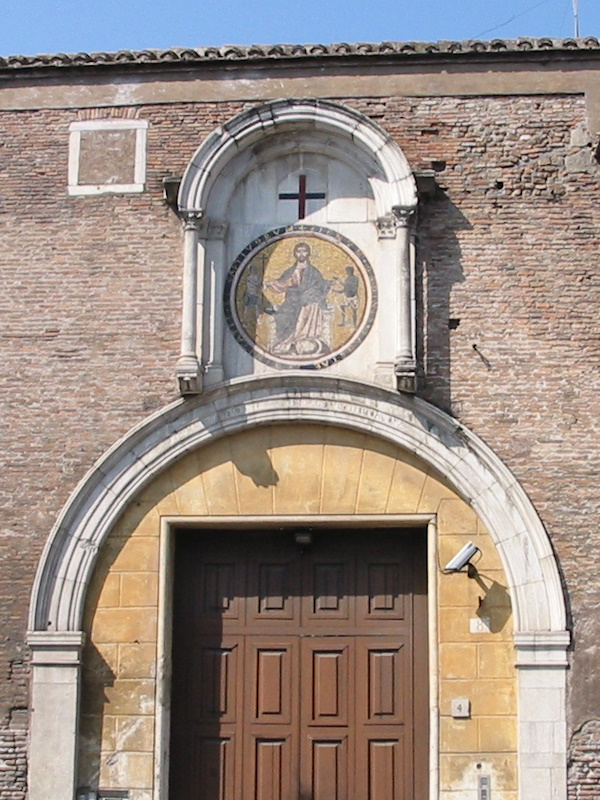
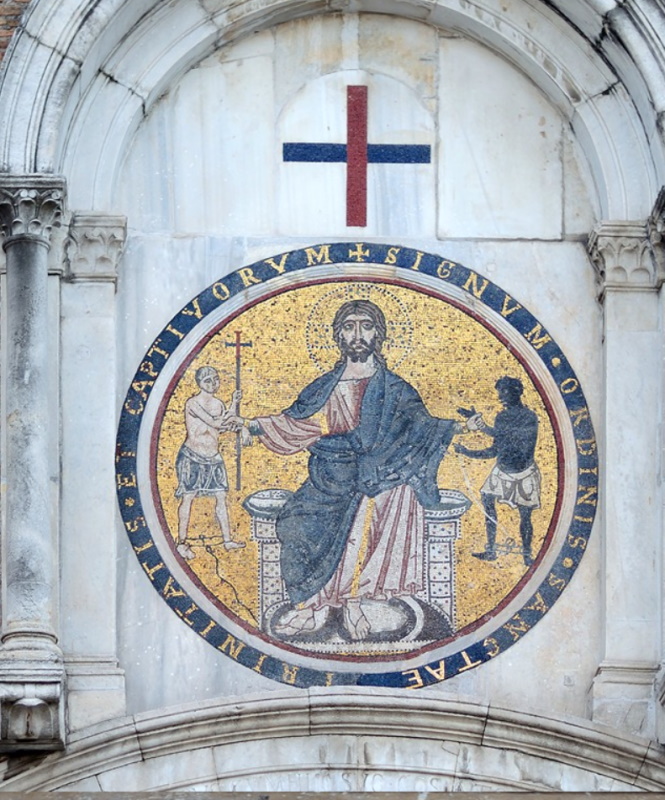
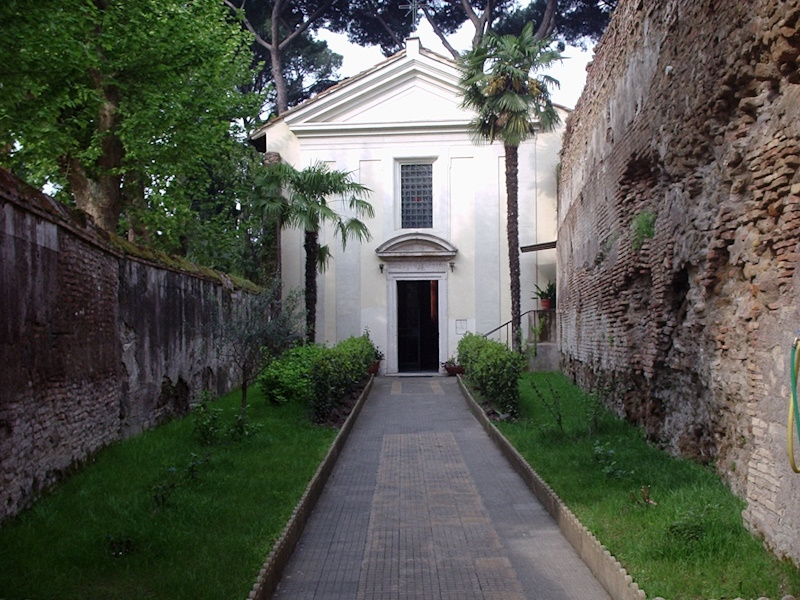
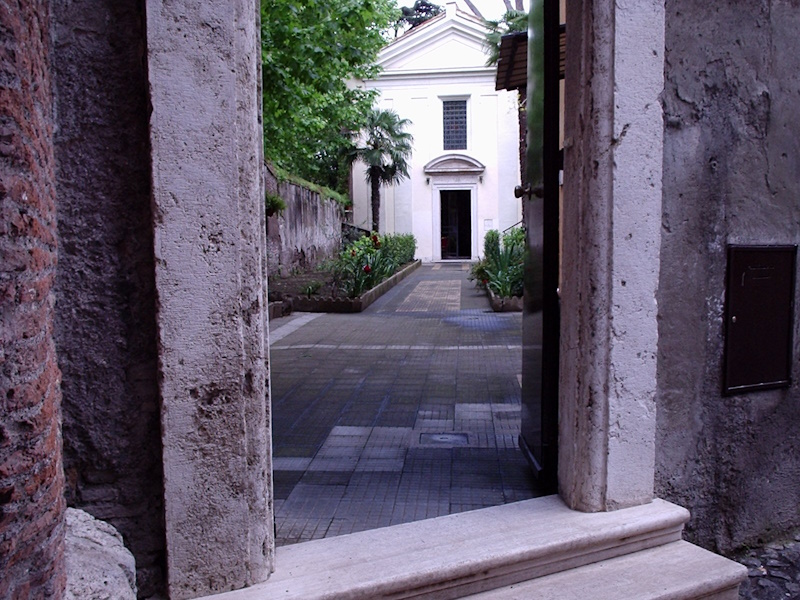
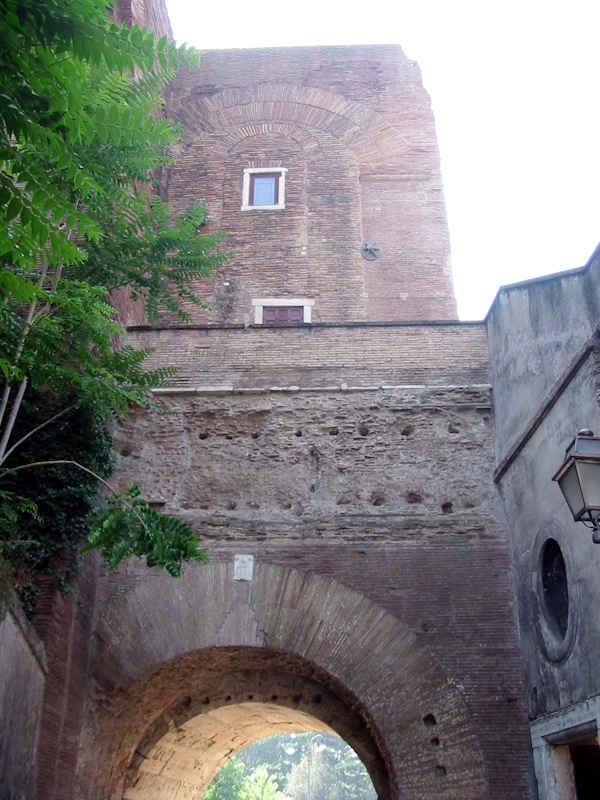
Unravelling History: St. Thomas and the Order of the Most Holy Trinity
In the heart of the Rione Celio, a few steps from Villa Celimontana and Santo Stefano Rotondo, near today's Arch of Dolabella and Silano, is the small church of San Tommaso in Formis, dedicated to St Thomas the Apostle. The appellation 'in Formis', however, derives from the Latin name of the Claudian Aqueduct - forma Claudia - on whose cisterns it was built.
The history of the church is inextricably linked with that of the Order of the Most Holy Trinity and its founder St. John de Matha, who lived out the last years of his life - probably staying in the cell located at the small window above the Arch of Dolabella and Silano - and died on 17 December 1213. His remains were initially buried in a marble mausoleum inside the church, but were transferred to Spain in 1655.
The construction of this interesting place of worship took place around the 10th century as an abbey church of a Benedictine monastery, although the date cannot be established exactly, as written records have been destroyed.
The first records date back to 1209, when Pope Innocent III donated the pre-existing monastery to the Trinitarian monks, who made it their own and adapted part of it as a hospital for the care of the poor, the sick, pilgrims and slaves ransomed by the order.
St. Thomas in Formis: history, restoration and secrets
The entrance to the former hospital can be identified by the portal , which at the top bears a medallion depicting St John de Matha. The entry to the former monastery, on the other hand, was built between the arches of the Roman aqueduct, while just beyond the arch of Dolabella and Silano is that of the church.
Around 1380, under the pontificate of Urban VI, the Order was forced to leave Rome because of their support for the antipope Clement VII. The Vatican Chapter took possession of the complex, disposing of the hospital and leaving the place abandoned until 1532, when it was decided to restore the church using materials from the nearby hospital to save money.
In 1571, Pope Pius V returned the church and what remained of the hospital and monastery to the Trinitarians, but when he died a few months later, the Order lost ownership again.
In 1663, some restoration works were carried out that gave the church a new façade in the centre of which is a portal surmounted by a triangular tympanum on which appears the dedicatio "DIVO THOMAE APOST(OLO) D(ICATUM)", or, "Dedicated to St. Thomas the Apostle".
The year 1898 was that in which the complex was given back to the Trinitarians, who undertook a new restoration. In 1926, the church was reopened for worship, but the hospital, by then demolished, made way for the headquarters of theIstituto Sperimentale per la Nutrizione delle Piante (Experimental Institute for Plant Nutrition), still in operation today.
St. Francis of Assisi and St. Thomas in Formis: evidence of a glorious past
Compared to the sumptuousness of its origins, today the church, with a single nave, is modest in size and appears decidedly bare, but the atmosphere you breathe inside is still cosy and welcoming, and rich in the testimonies of a glorious past.
On the high altar, the work by Aronne del Vecchio depicts Pope Innocent III in the act of approving the Trinitarian Rule Jesus and sending St. John de Matha into the world to redeem slaves.
Under the altar where the painting depicting Our Lady of Good Remedy in the act of handing a purse of money to St John de Matha is located, is the relic of the phalanx of a finger of the Catalan saint.
On the left, on the other hand, the painting by Siciolante da Sermoneta reports on the many visits of St Francis of Assisi to the monastery as a guest of St John de Matha. The painting depicts the Virgin Mary, Saint Boniface the Martyr and Saint Francis of Assisi with Pope Boniface IX.
Between slavery and redemption: the mosaic and the vision of St. John of Matha
The aedicula above the ancient entrance to the hospital bears the symbolic mosaic of the Order of the Trinitarians. Round in shape, as testified by the inscription on the vault of the portal (MAGISTER IACOBUS CUM FILIO SUO COSMATO FECIT OHC OPUS), it is the work of Giacomo and his son Cosimo, Roman marble workers of the prestigious Cosmatesque School - whose unmistakable style can be found in many churches in Rome - and was created at the beginning of the 13th century. The mosaic recounts the vision that led St. John de Matha to found the Order: Christ enthroned between two slaves - one white on the right and the other black on the left - chained.
An inscription that says "Signum Ordinis Sanctae Trinitatis et Captivorum", or Emblem of the Order of the Holy Trinity and Slaves, encloses it. The cross in the hands of the white slave and the cross above the roundel of the mosaic are also a reference to the Order of the Most Holy Trinity: the red and blue that identify them are the same colours that appear on the crosses embroidered on the scapulars of the Trinitarian monks.
Cover photo: Redazione Turismo Roma
Photo gallery: Order of the Most Holy Trinity, official site
The Fountain of the Navicella
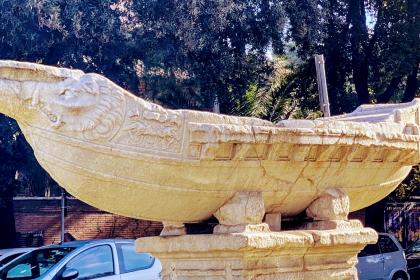
 Condividi
Condividi
Church of Santa Maria in Domnica alla Navicella
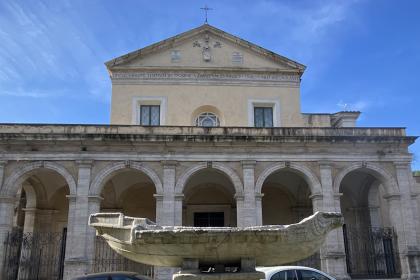
 Condividi
Condividi
Information
For the timetable of the masses and the visiting conditions, please contact the Curia Generalizia Dell'Ordine Della Ss.Trinità
 Condividi
Condividi
Location
To find out about all accessibility services, visit the Rome accessible section.












































